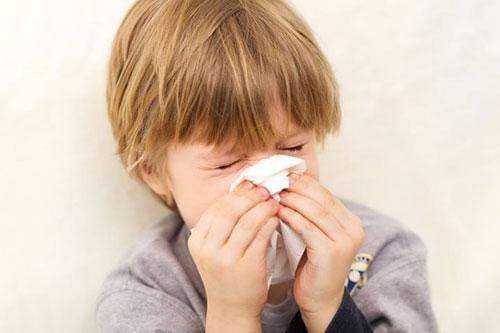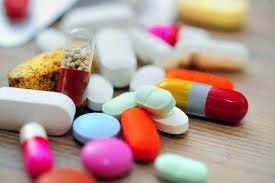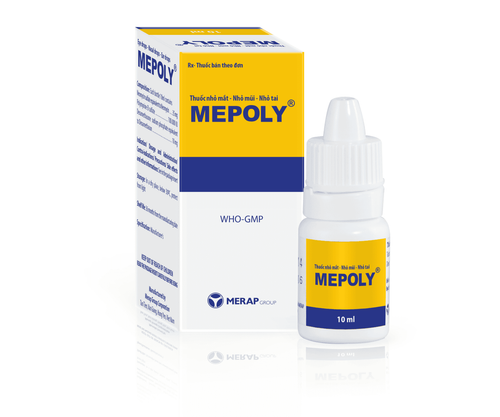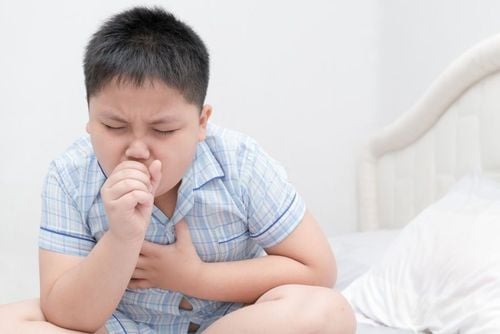This is an automatically translated article.
Posted by Doctor Ho Thi Anh Thu - Pediatrics - Neonatology Department - Vinmec Nha Trang International General Hospital
Cold is the most common illness. Colds often appear in infants and children and last longer than adults.
1. What causes a cold?
A cold is a group of symptoms caused by several different viruses. There are more than 100 different types of rhinovirus, which is the leading virus that causes colds. Other viruses that cause colds include enteroviruses (echoviruses and coxsackieviruses) and coronaviruses. Because there are so many viruses that cause cold symptoms, a person can have multiple colds a year or dozens over the course of their life.
Children under 6 years of age have an average of 6 to 8 colds per year (up to once per month, September through April), with symptoms lasting an average of 14 days. This means that a child can get sick with intermittent cold symptoms without cause for concern. Children attending daycare are more likely to catch colds than children receiving care at home. However, when these children entered primary school, they were less likely to catch colds, perhaps because of their immunity.
Seasonal:
Colds usually occur at any time of the year, although most colds occur in the fall and winter months. Colds are not caused by cold climates or exposure to cold air.
Route of transmission:
Colds are transmitted from person to person, by direct contact or exposure to viruses in the environment. Colds are most contagious within 2 to 4 days of the onset of symptoms.
Direct contact:
People with colds often carry cold viruses on their hands, which are capable of infecting others for at least two hours. If a child with a cold touches another child or adult, who then touches their eyes, nose, or mouth, the virus can infect that person.

Contagion from viruses on surfaces:
Some cold viruses can survive for up to a day on surfaces (such as countertops, doorknobs, or toys).
Inhalation of viral particles:
Droplets contain viruses that can be airborne by breathing or coughing by a person with a cold. Rhinovirus is not usually transmitted by contact with droplets, although influenza viruses and coronaviruses can be transmitted by droplets. Cold viruses are not usually spread through saliva.
2. Cold symptoms
Symptoms of a cold usually begin one to two days after exposure. In children, nasal congestion is the most prominent symptom. Your child may also have a clear, yellow, or green runny nose. Fever (temperature above 38°C) is common during the first three days of illness.
Other symptoms may include sore throat, cough, irritability, trouble sleeping and decreased appetite. The lining of the nose may become red and swollen, and cervical lymphadenopathy may appear.
Symptoms of a cold are usually at their worst during the first 10 days. However, some children continue to have a runny, stuffy nose and cough that lasts for more than 10 days. Also, it's not uncommon for a child to get a second cold when the symptoms of the first cold are disappearing; this can cause a child to have a cold that lasts for weeks or even months, especially during the fall and winter. This is not a cause for concern, unless your child has any of the serious symptoms mentioned below.
Symptoms of allergies (allergic rhinitis) are slightly different from those of a cold and may include itchy nose and itchy eyes.
3. Complications of a cold
Most children with colds have no complications. However, parents should be aware of the signs and symptoms of possible complications.
Ear infections
Between 5 and 19% of children with a cold develop a bacterial or viral ear infection. If a child has a fever (temperature higher than 38°C) after the first three days of cold symptoms, it may be due to an ear infection.
Asthma
Colds can cause wheezing in children who have never had wheezing before or make asthma worse in children with a history of it.
Sinusitis
Children who have a stuffy nose for more than 10 days without improvement may have a bacterial sinus infection.
Pneumonia
A child with a fever after the first three days of cold symptoms may have bacterial pneumonia, especially if the child has a cough and shortness of breath.
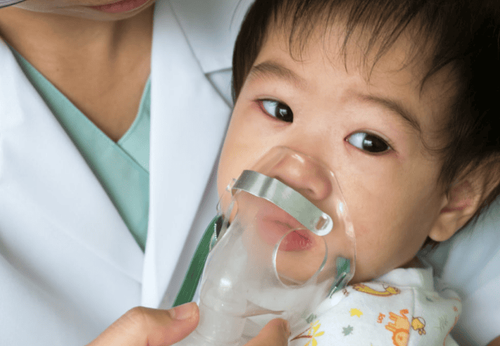
4. Cold treatment
Symptomatic treatment:
Treatment of colds in children is different from treatment for adults. Antihistamines, decongestants, cough suppressants, and expectorants, are all marketed to treat cold symptoms. However, there have been very few clinical trials of these products in children, and no studies have shown that these products benefit children.
The US Food and Drug Administration (FDA) has advised against the use of these drugs in children under 6 years of age. These drugs have not been shown to be effective and have the potential to cause dangerous side effects. For children over 6 years old, cold medicine may pose less of a risk; however, still no proven benefit.
Parents can give acetaminophen (brand name: Tylenol) to treat children when they are uncomfortable with fever during the first few days of a cold. Ibuprofen can be given to children over 6 months. Children under 18 years of age should not take aspirin.
Humidified air can improve symptoms of nasal congestion and runny nose. For young children, parents can try saline nasal drops to thin the mucus, followed by suctioning to temporarily remove secretions from the nose. Older children can try saline nasal spray.
Honey may be helpful for nocturnal cough in children over 12 months.
Parents should encourage their children to drink enough fluids; It is not necessary to drink too much liquid. Children often lose their appetite when they have a cold and may eat less than usual. If a young child does not eat or drink at all for a long time, parents should take the child to the doctor.
Antibiotics
Antibiotics are not effective in treating colds. Medicine may be needed if the cold is complicated by a bacterial infection such as an ear infection, pneumonia, or sinusitis. When parents think their child is developing these infections, they should take their child to the doctor.
The inappropriate use of antibiotics can lead to resistance and many side effects, such as allergic reactions.
Herbal treatments and supplements
Some dietary supplements, including zinc and herbal products such as echinacea, are advertised to treat or prevent cold. There is some evidence that prophylactic use of vitamin C can reduce the duration of the common cold in children. With the exception of vitamin C, no treatment has been shown to be effective in clinical trials; The use of these drugs is not recommended.
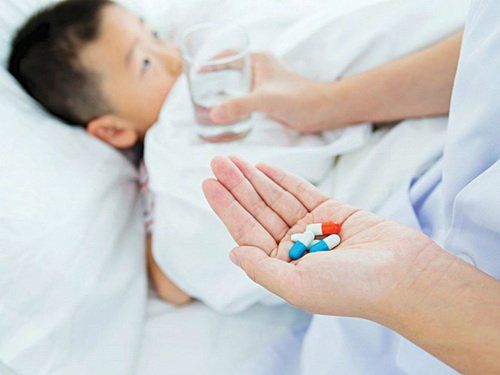
5. Prevention of colds
Simple hygiene measures can help prevent cold virus infection. These measures include:
Hand washing is a necessary and highly effective way to prevent the spread of infection. Hands should be wet with plain soap and water, and rubbed together for 15 to 30 seconds. It is not necessary to use antibacterial hand soap. Parents and children should wash their hands before, after eating and after coughing and sneezing.
Alcohol-based hand sanitizer is a good alternative to disinfecting hands if a hand wash basin is not available. Apply evenly to the entire surface of hands, fingers, wrists until dry and can be used many times. These drugs can be used many times without causing skin irritation or loss of effectiveness.
It may or may not be possible to completely avoid contact with people who are sick, although sick parents should try to limit direct contact with their children.
Most children with colds do not need to miss school. Because children have spread the virus before they show symptoms of a cold.
Using household cleaners that kill viruses, such as phenol/alcohol can help reduce virus transmission.
6. When does the child need to see a doctor?
If a child has any of the following symptoms, parents should seek medical attention immediately:Refusing to drink anything for a long time Behavior changes, including irritability or lethargy (decreased response) Difficulty breathing , shortness of breath or shortness of breath Fever above 38.4°C lasting more than three days. Nasal congestion that gets worse or doesn't improve within 10 days. Red eyes or yellow discharge. There are signs or symptoms of an ear infection (ear pain, child picking their own ears, fussiness). When a child has abnormal signs of health, parents can take the child to Vinmec Health system for timely examination and treatment.
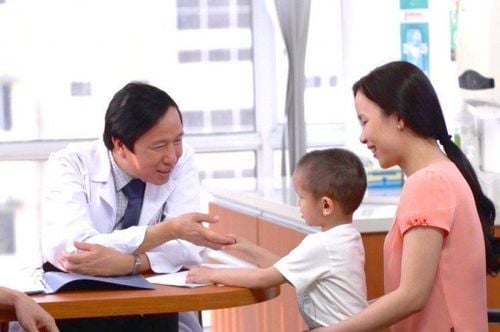
As a key area of Vinmec Health System, Pediatrics Department - Vinmec International General Hospital always brings satisfaction to customers and is highly appreciated by industry experts thanks to the following advantages:
gathers a team of leading doctors and doctors in Pediatrics: including leading experts, with high professional qualifications (professors, associate professors, doctorates, masters), experienced, having worked in different hospitals. big hospitals like Bach Mai, 108.. The doctors are all well-trained, professional, have a heart - reach, understand young psychology. In addition to domestic pediatric specialists, the Department of Pediatrics also has the participation of foreign experts (Japan, Singapore, Australia, USA) who are always pioneers in applying the latest and most effective treatment regimens. . Comprehensive services: In the field of Pediatrics, Vinmec provides a series of continuous medical examination and treatment services from Newborn to Pediatric and Vaccine,... according to international standards to help parents take care of their baby's health from birth to childhood. from birth to adulthood Specialized techniques: Vinmec has successfully deployed many specialized techniques to make the treatment of difficult diseases in Pediatrics more effective: neurosurgery - skull surgery, stem cell transplantation. blood in cancer treatment. Professional care: In addition to understanding children's psychology, Vinmec also pays special attention to the children's play space, helping them to have fun and get used to the hospital's environment, cooperate in treatment, improve the efficiency of medical treatment.
Please dial HOTLINE for more information or register for an appointment HERE. Download MyVinmec app to make appointments faster and to manage your bookings easily.
REFERENCES
[1] US Food and Drug Administration. Public Health Advisory. Nonprescription cough and cold medicine use in children. The FDA recommends that over-the-counter (OTC) cough and cold products not be used for infants and children under 2 years of age. www.fda.gov/Drugs/DrugSafety/PostmarketDrugSafetyInformationforPatientsandProviders/DrugSafetyInformationforHeathcareProfessionals/PublicHealthAdvisories/UCM051137 (Accessed on August 31, 2011).
[2] Gonzales R, Malone DC, Maselli JH, Sande MA. Excessive antibiotic use for acute respiratory infections in the United States. Clin Infect Dis 2001; 33:757.
[3] Heikkinen T, Järvinen A. The common cold. Lancet 2003; 361:51.
[4] Clemens CJ, Taylor JA, Almquist JR, et al. Is an antihistamine-decongestant combination effective in temporarily relieving symptoms of the common cold in preschool children? J Pediatr 1997; 130:463.
[5] Paul IM, Yoder KE, Crowell KR, et al. Effect of dextromethorphan, diphenhydramine, and placebo on nocturnal cough and sleep quality for coughing children and their parents. Pediatrics 2004; 114:e85.
[6] Cohen HA, Rozen J, Kristal H, et al. Effect of honey on nocturnal cough and sleep quality: a double-blind, randomized, placebo-controlled study. Pediatrics 2012; 130:465.







